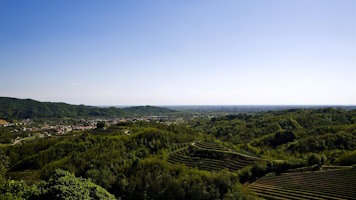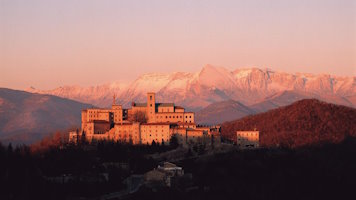Monte La Bernadia with the Fort
Behind Tarcento there are several hills between the valleys of the Torre and Cornappo streams, bounded to the north by the foothills of the Gran Monte - Cuel di Lanis range. In this area, the outcropping rocks and their tectonics are not homogeneous; they vary from north to south depending on two main structures: the Ellipsoidal Line and the Periadriatic Line, both with overthrusting characteristics, dividing the mountainous region into zones with different tectonic, lithological, and morphological aspects.
The Periadriatic Line that runs at the base of the Chiampon - Gran Monte range, and the Ellipsoidal Line at the base of the Cuarnan - La Bernadia mountains, delimit an intermediate band of rocks arranged like a large dome.
In the La Bernadia complex there are numerous bowl-shaped epi-hypogean karsts, called sinkholes. The Cretaceous part is poor in caves: it is very permeable, essentially due to fracturing and microkarstification. The Eocene part, however, although less permeable, is very rich in caves.
On the summit of Bernadia (866 meters a.s.l.) stands the Fort of Monte. La Bernadia-Monte Lonza, an imposing defensive structure built between 1908 and 1913 to block potential invasions from the Torre Valleys, part of the Medio Tagliamento defensive system, remained unused.
Accessibility: From the road coming from Sedilis, proceed towards Useunt to the top, from there descend to Villanova.

ph. Giorgio Bianchi, Archive MCC

ph. Giorgio Bianchi, Archive MCC

Lighthouse Julia
ph. Giorgio Bianchi, Archive MCC

ph. Giorgio Bianchi, Archive MCC














